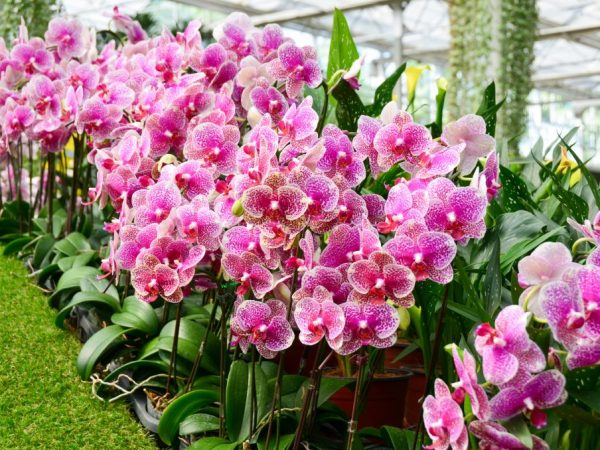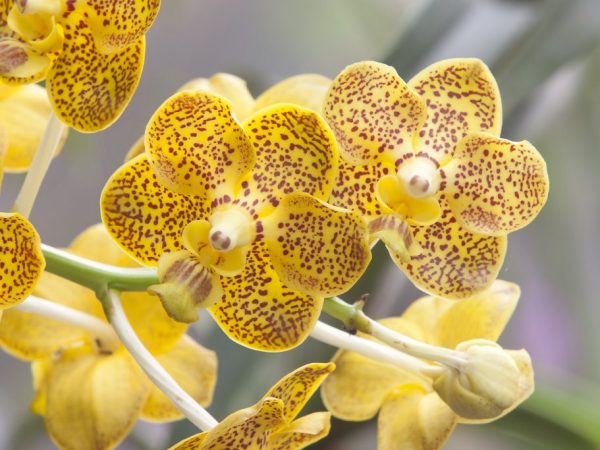Features of blooming orchid care
Caring for a blooming orchid has some differences from how you should care for a plant during a dormant period. Compliance with the rules allows you to extend the period of formation of inflorescences.

Features of blooming orchid care
Maintaining a microclimate
During the budding period of an indoor flower at home, it is important to maintain a microclimate that promotes the process of bud formation.
A place
During the ejection stage, the flowerpot should be in a permanent location. When buds appear, the pot container is not moved or turned: any movement of the flower will lead to a stressful situation and a reduction in budding.
Lighting
For the period of color formation, abundant but diffused lighting is created so that direct sunlight does not fall on the plant.
For abundant and long-term formation of inflorescences, phalaenopsis at home create a daylight hours with a duration of at least 12 hours. Other orchid varieties require slightly shorter lighting times - up to 8 hours.
In cold weather phytolamps help to provide a home flower with proper lighting. The direction of light from the phytolamp directly to the discarded peduncle makes it possible to achieve budding in winter.
Temperature regime
The temperature regime in the process of caring for a flowering houseplant depends on its variety. The difference in daytime and nighttime temperatures is required by everyone: this activates the process of bud formation.
Humidity and watering
During the flowering stage, the orchid is watered more often than during normal times, while preventing the liquid from stagnating in the pot. Excessive moisture inhibits bud development and sometimes leads to root rot.

Can't flood orchid
Watering during the budding period involves:
- use of softened water at room temperature, if possible - rain or melt,
- getting directly on the roots of the plant, avoiding foliage and flowers,
- alternation of irrigation with immersion and soaking; when soaking, the peduncle is placed on the water surface, avoiding moisture entering the growing point.
The need for watering is indicated by the dried roots of the orchid, acquiring a light gray color. Green roots mean they are still damp.
Spraying from a spray bottle helps to create the required moisture content (at least 70%) for the flower. The blooming orchid is sprayed so that the water does not drain into the core of the inflorescence.
Fertilization
When caring for a blooming orchid, it is recommended to apply fertilizing complexes containing phosphorus and potassium. The frequency of fertilization is one-time, with an interval of 2-3 weeks. A feature of fertilizing a flower during budding is washing the substrate in a pot from excess mineral salts. This is done after a week after applying the fertilizer complex by pouring a shower over the soil. The water drained into the pan is poured.
Peduncle support
Under the weight of a large number of inflorescences in the process of abundant flowering, the flowering process sometimes strongly bends and breaks off. To support him, use specially designed flower supports. The flowering process is fixed at the support using a clip-clothespin or floral wire, dense lace, thread.
Transplanting and pruning peduncles
An orchid at the flowering stage is transplanted in exceptional cases: when the plant is threatened with death. The stress generated during the orchid transplant is minimized by placing the plant in a shaded area. This gives the orchid a break from the procedure.
After the end of budding, when the flowering process turns black and dries up, it is removed, cutting to the base, which makes it possible for a new one to develop. If the peduncle remains green, it is not cut off: new buds can form on it.
Conclusion
Caring for an orchid during and after flowering has its own characteristics. If you take care of a blooming indoor flower, observing the basic rules, creating comfortable conditions for it, it is possible to activate the process of the appearance of inflorescences, extend the duration of budding and ensure the subsequent ejection of flowers.


